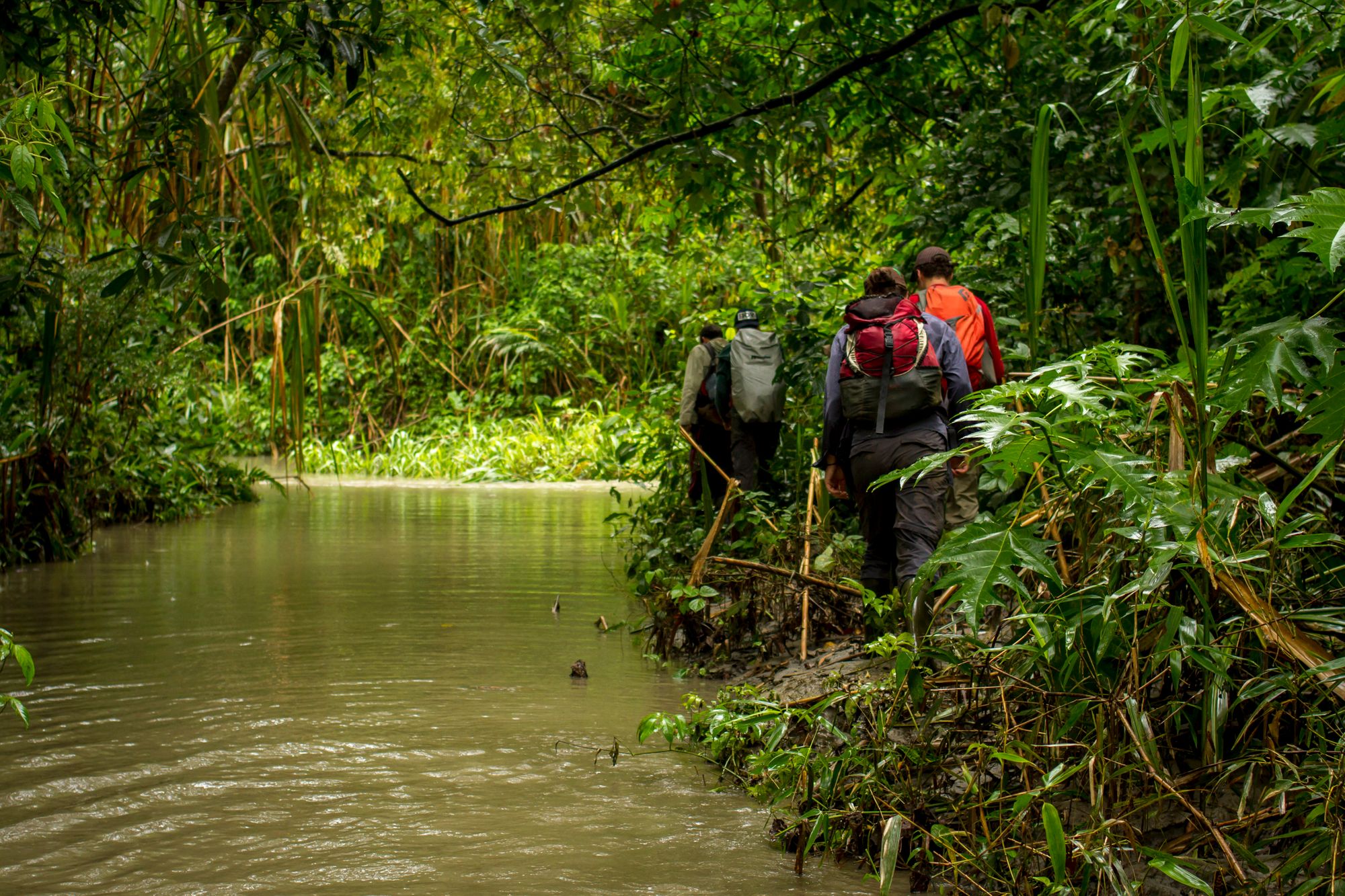In 2020 we declared a Climate Emergency and called on the rest of the industry to join us. In 2021 we collaborated with the United Nations Environment Program, United Nations World Tourism Organisation, The Travel Foundation and Visit Scotland to see our original climate emergency declaration successfully adopted as the central tourism industry framework for climate action, launched at COP26 in November as the Glasgow Declaration.
As part of that declaration, we commit to measuring and reporting on our climate footprint, publishing a transparent climate action plan, and updating on our progress annually. So read on if you want to join us in ‘marking our homework’.
We’ll share our 2021 carbon footprint, then go through every goal in our 2021 plan one by one, and comment on where we got to. The lessons we learn along the way inform the goals we set in our 2022 plan.
2021 carbon footprint
The numbers are in...
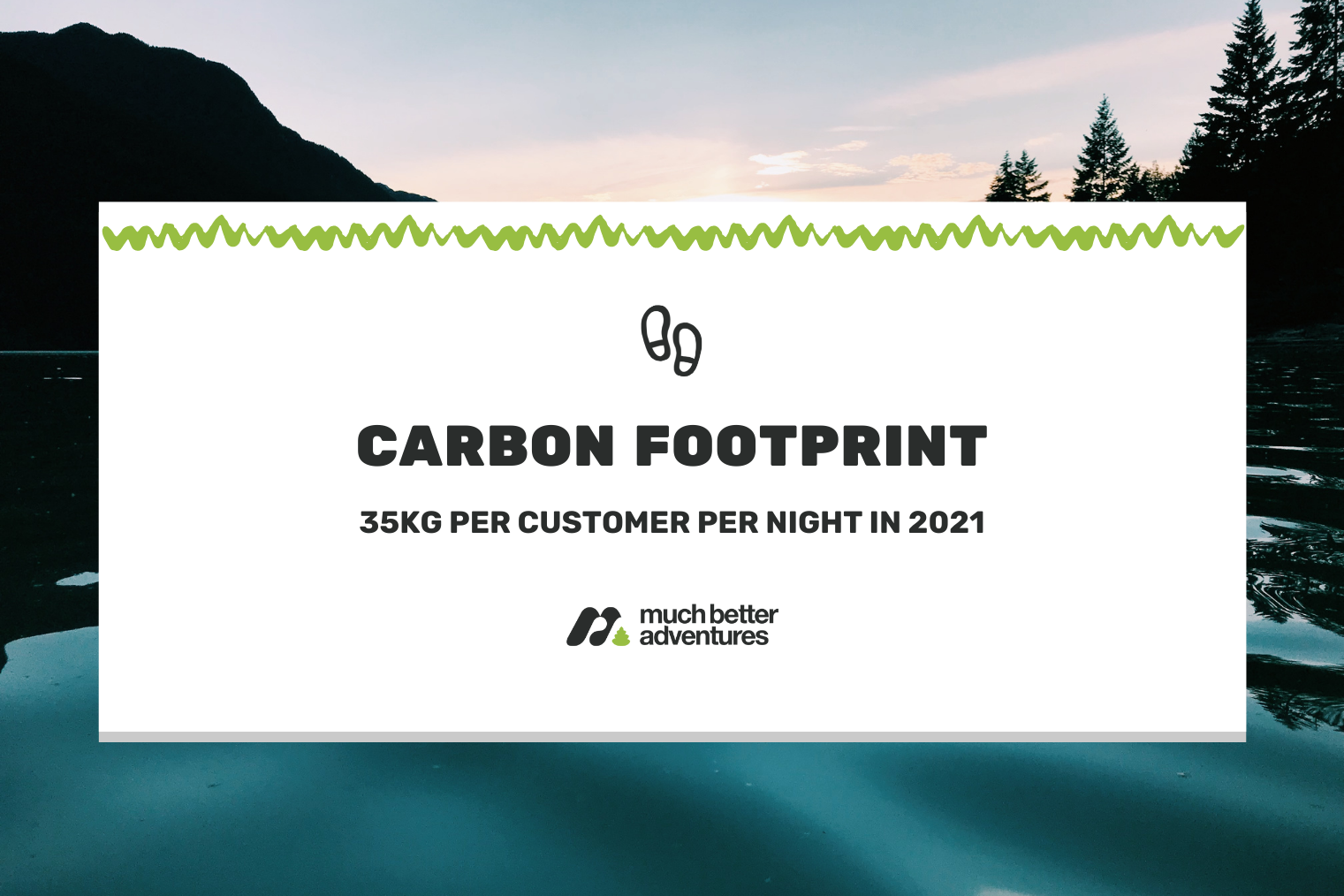
This compares to 36kg/customer/night in 2020 and 38kg/customer/night in 2019.
In line with the Glasgow Declaration, our goal is to reduce this to 17kg per customer per night by 2030.
To put that into context, driving 1000 miles/1,609km would emit approximately 281kg of CO2 in an average petrol car (or 140.5kg per person if there were 2 of you in it). A return economy class flight from London to New York would be approximately 1,619kg per person.

Crunching the numbers confirms something we’d long suspected: compared to the industry average, the trips are relatively low carbon (once you get there). We camp and kayak, hike and stay in mountain huts. Compare that to luxury resorts with all-you-can-eat buffets, cruise ships and coach based overland tours, and you quickly realise why.
While the figure varies widely depending on the trip, as an average across them all it broke down to be:

Every trip has a ‘carbon footprint’ section on it so you can see the expected footprint of your trip before you book. Very few international travel companies do this. We believe that must change, quickly. Read our magazine article introducing our carbon label initiative and how we measure it.
Our 2021 goals
1. Measure
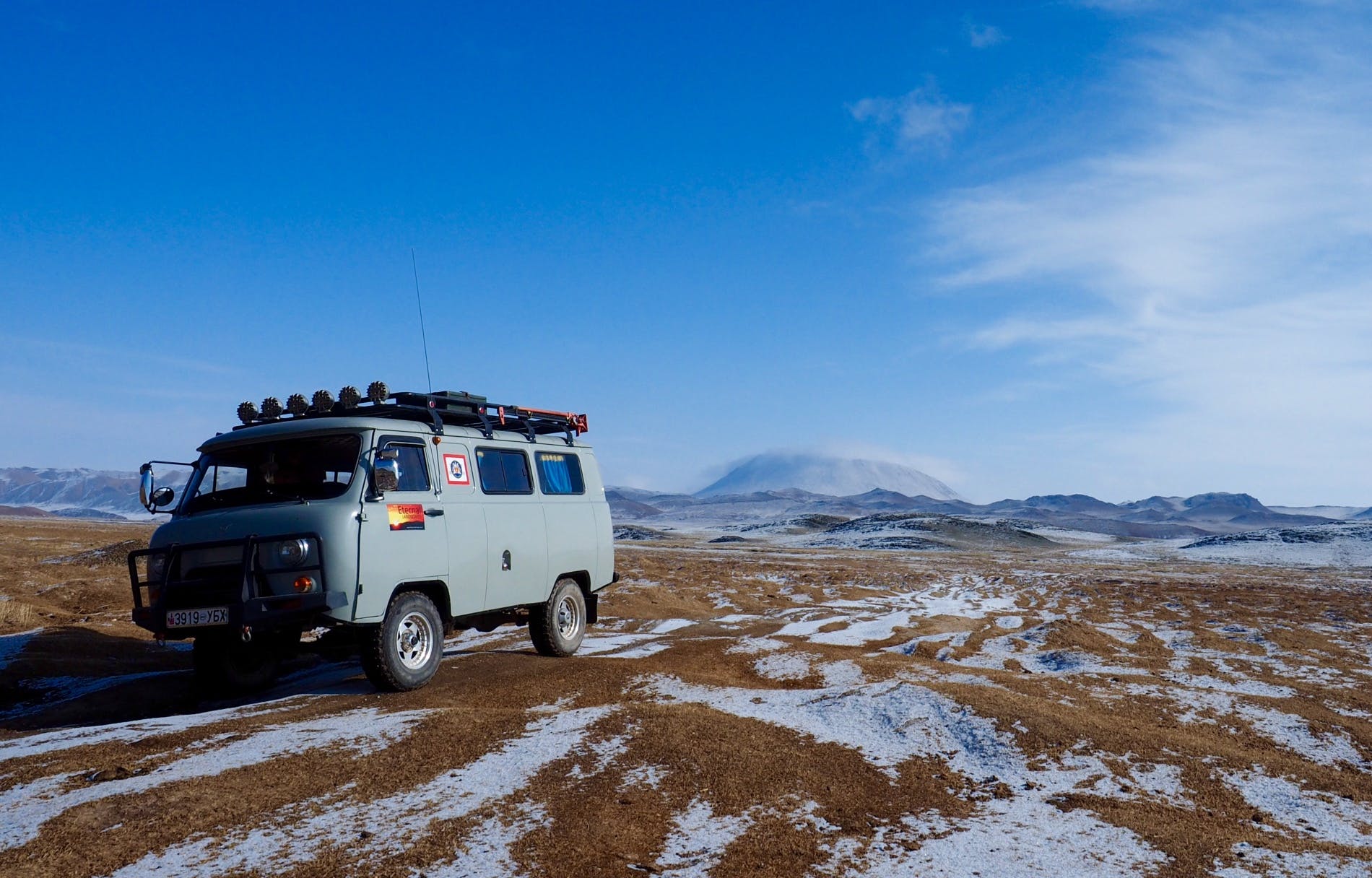
Goal: Our carbon footprint analysis includes an estimate of all local transport, accommodation, activities, guides, staff and office operations, and food. The only major thing it doesn’t include is flights and travel to the destination. However, as we don’t book flights, have customers from all corners of the world, and no way of reliably knowing their travel plans, we simply can’t include them in the figures on display for now. Our goal for 2021 is to fix that, so that when a customer books, we can measure and mitigate the carbon emitted by each individual customer's travel plans too.
How we did: Nope, we’ve not managed to crack this one. It is both technically and logistically a tough nut to crack, and our available resource for this was badly affected by ongoing coronavirus challenges. We aim to revisit over 22/23.
2. Reduce
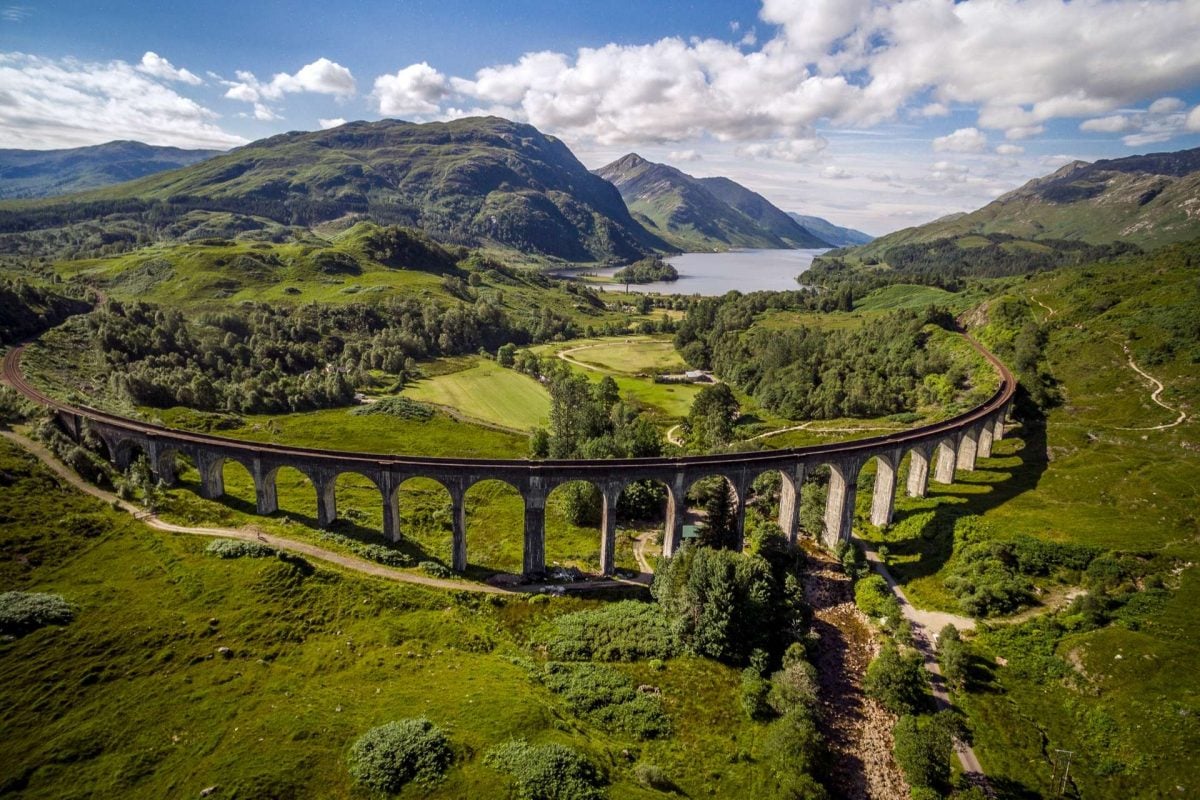
Goal: Complete an audit of all hosts across a range of carbon reduction and sustainability measures, as the basis for developing a shared roadmap for future improvements. Our longer term goal is to ensure all hosts and partners we work with have also published transparent climate action plans.
How we did: When it came to push the button on this one we elected to pull back. With our industry and network of local hosts so badly hit by the ongoing coronavirus pandemic they simply did not have the resource in 2021 to handle in depth carbon audits. This is something that we will pick up in coming years when it is more viable.
Goal: Continue to expand the range of adventures that are accessible by train, and an ever wider range of big adventures designed to encourage customers to fly less, and stay for longer.
How we did: We’ve made good progress here - developing a wider range of popular UK adventure trips, showcasing how amazing holidays closer to home can be. We’ve also successfully expanded our big adventures to now make up over 50% of our sales - ensuring customers are flying less, staying longer and having a bigger positive impact on the local economy and community in the process. This will be an ongoing project for many years to come.
3. Remove
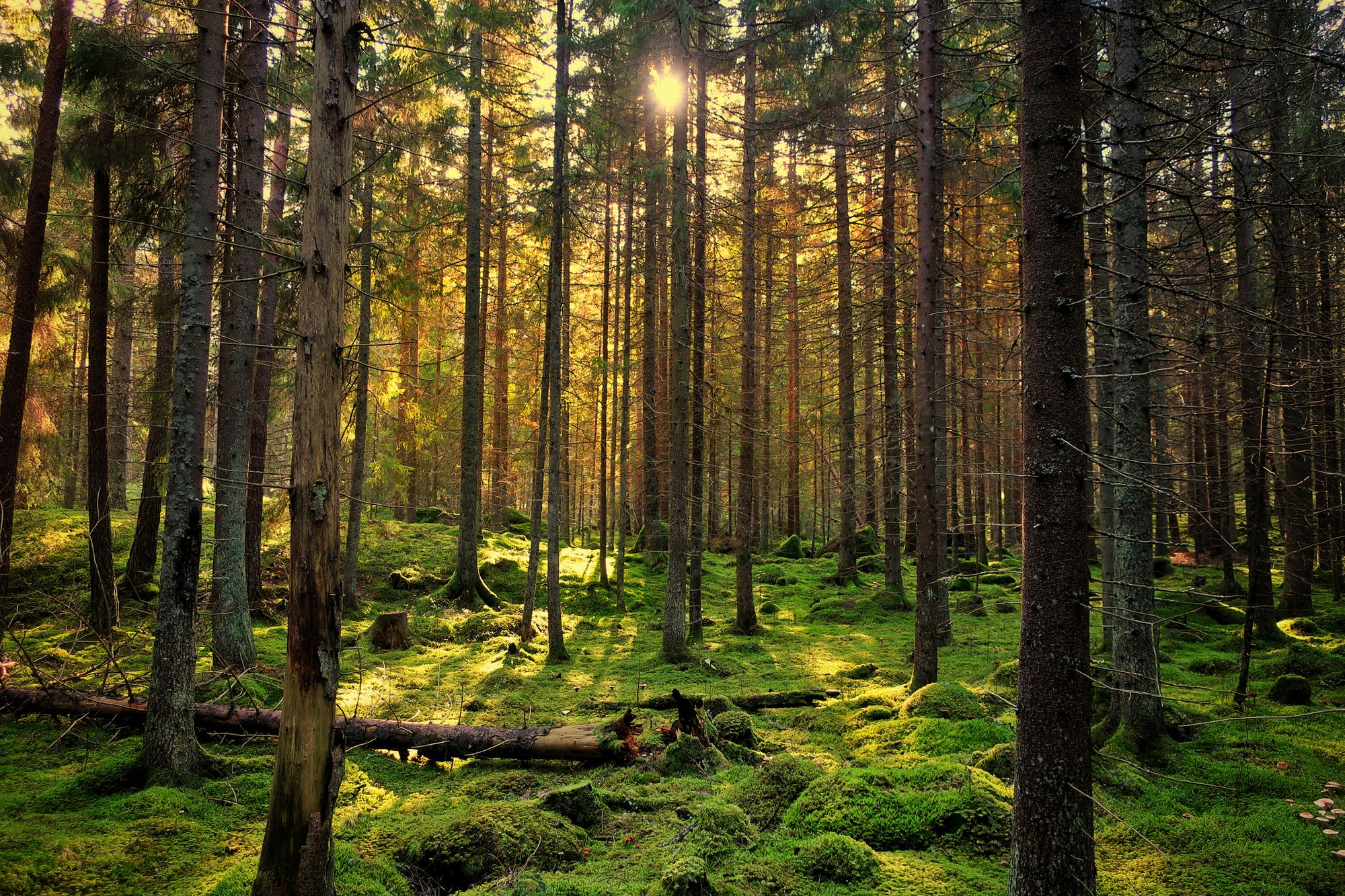
Goal: Plant enough trees to suck at least 2x more carbon out the atmosphere than is emitted by our trips.
How we did: Done! We’ve stuck to this as part of our commitment to channeling 5% of our revenues into reforestation and rewilding projects that have the highest potential for carbon removal and reversal of the biodiversity crisis.
Goal: Upgrade our carbon measurement tools so that when a customer books we can measure and mitigate the carbon emitted by each individual customer's travel plans too.
How we did: As above, we’ve not managed to crack this one. It is both technically and logistically a tough nut to crack, and our available resource for this was badly affected by ongoing coronavirus challenges. We aim to revisit over 22/23.
4. Campaign
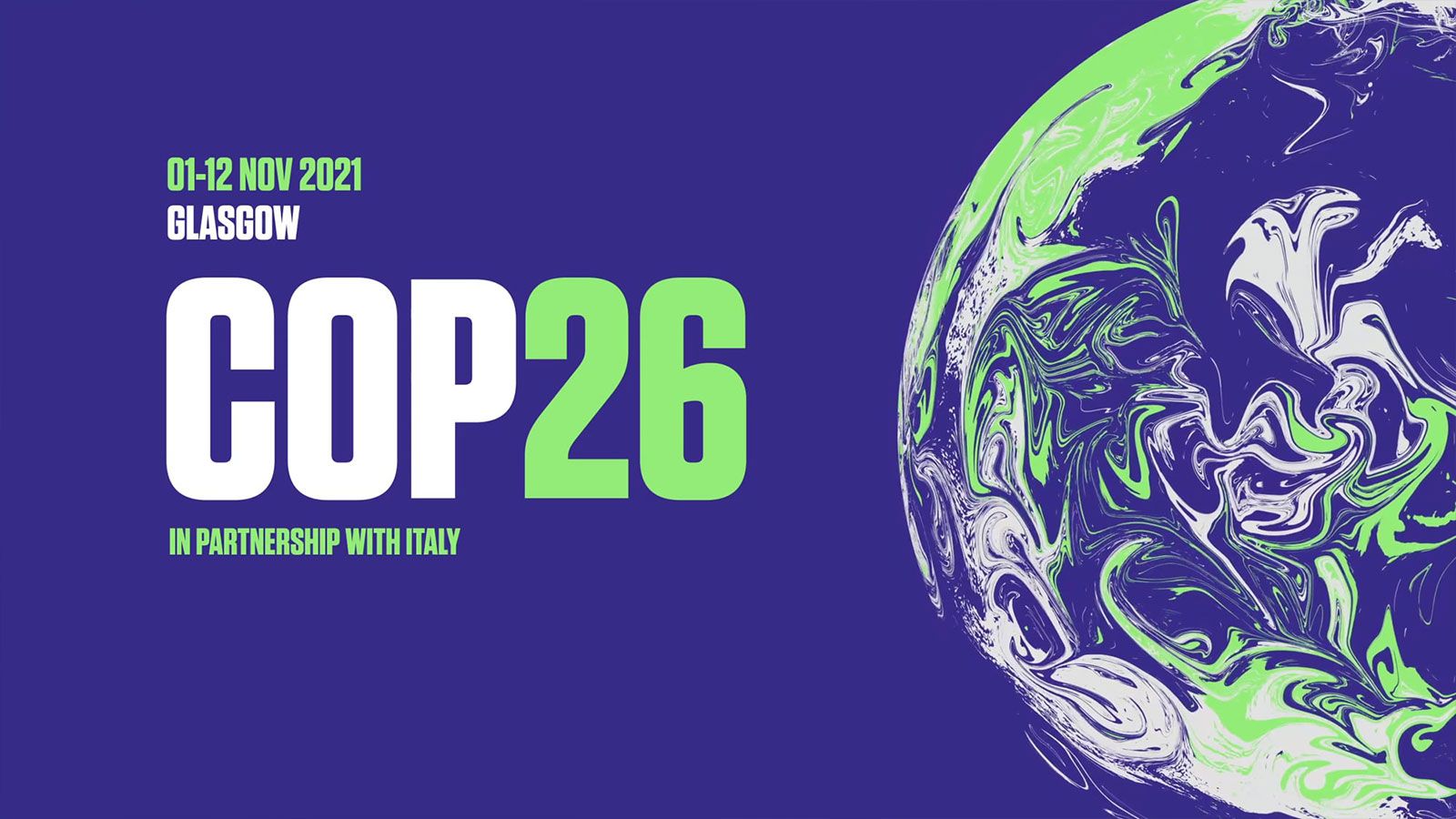
Goal: In 2021 we are targeting a rapid escalation of emergency declarations across the industry, and are working collaboratively to publish Carbon Action Plan “Blueprints’ for all major sectors.
How we did: We surpassed all expectations on this, proving the old mantra that it only takes a small group of committed people to make change happen. We collaborated with the United Nations Environment Program, United Nations World Tourism Organisation, The Travel Foundation and Visit Scotland to see our original climate emergency declaration successfully adopted as the central tourism industry framework for climate action, launched at COP26 in November as the Glasgow Declaration.
For the first time, mainstream global tourism leaders are unifying around a strong commitment to action that is aligned with the need to cut carbon at least in half over the next decade. Find out more about it all here and watch our Alex's reaction at COP26 on Instagram.
Conclusion
With 2021 being heavily hit by Covid-19 unfortunately so too was our ability to deliver on many of the actions we targeted. Given the relatively small carbon footprint of our business, and how few customers were able to even travel in 2021, we felt there much bigger carbon reduction gains to be had by instead focussing all our efforts on campaigning. We think the results justify that decision.
With the industry now mobilised to take action on carbon, and borders also starting to re-open, we hope to be able turn our attention back to our own house over the next few years - focussing in on ensuring that our own operations deliver tangible carbon reductions year on year, despite the low starting point we already have.
Now, check out our 2022 Carbon Action Plan.

